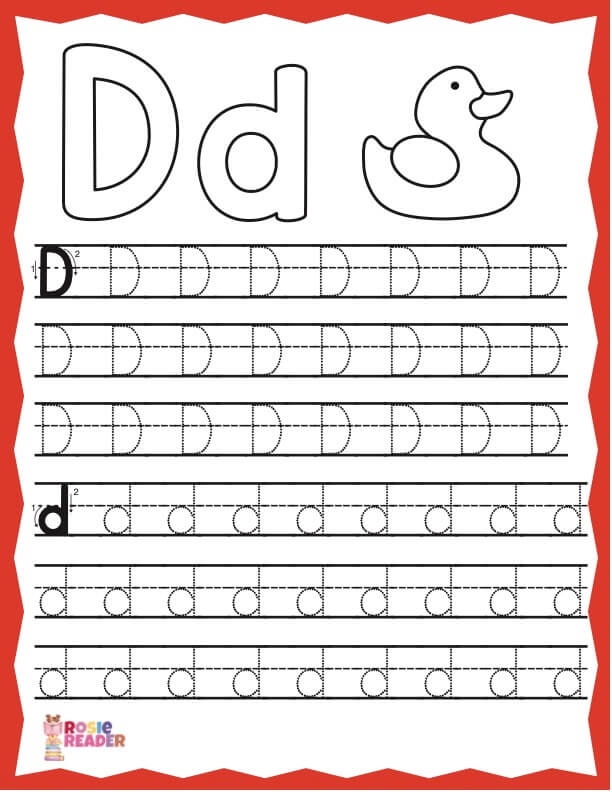Tracing letters is an important skill for young children to develop as they learn to write. It helps them improve their hand-eye coordination and fine motor skills. In this article, we will focus on tracing the letter D, which is one of the basic letters of the alphabet.
Before starting the tracing practice, it is important to ensure that the child is holding the pencil correctly. Encourage them to hold it with their thumb and index finger, with the pencil resting on the middle finger for support. This grip will help them have better control while tracing the letter D.
When tracing the letter D, start by showing the child how to make a small curve from the top to the bottom, then lift the pencil and make a straight line back up to the top. Encourage them to practice this motion several times on a piece of paper before moving on to tracing the actual letter.
Provide the child with worksheets that have dotted lines outlining the letter D. Ask them to trace over these lines with their pencil, following the curves and angles of the letter. You can also use activities such as tracing in sand or shaving cream to make the practice more engaging and tactile.
As the child becomes more confident in tracing the letter D, encourage them to try writing it on their own without the dotted lines as a guide. Praise their efforts and progress, and continue to provide opportunities for them to practice writing the letter D in different contexts.
In conclusion, tracing the letter D is a valuable activity that can help young children develop their writing skills. By providing them with the tools and guidance they need, you can help them master this important letter of the alphabet and lay the foundation for future writing success.
